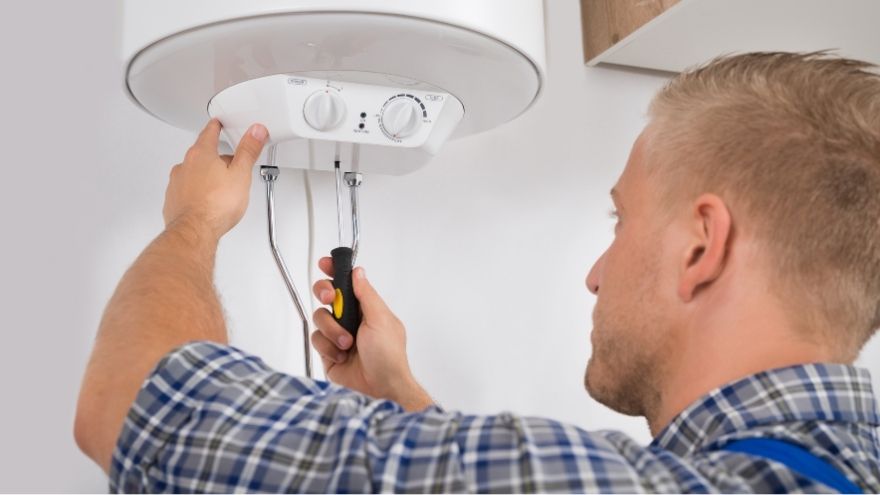Classic heating systems in houses and apartments are often equipped with a boiler, a simple electrical device designed to heat and store utility water. Such equipment replaces, for example, the DHW tank in a heat pump. Operating an electric boiler requires, above all, regular servicing. In such situations, it is necessary to drain the water from the tank. Do you know when exactly you need to empty an electric boiler and how to do it without the risk of damaging the heating element? Browse this installation guide and learn more!

Check out water heaters at the Onninen wholesaler
How to prepare the space for emptying water from the boiler?
Before you begin the process of emptying water from an electric boiler in your home or apartment, you need to prepare a safe space for it. It is also crucial to know the basic construction of this type of device.
 Water heaters are made up of several important elements : a DHW tank, a heater, a safety valve, a non-return valve and a drain valve. The latter is crucial if you want to safely drain water from the tank in the boiler.
Water heaters are made up of several important elements : a DHW tank, a heater, a safety valve, a non-return valve and a drain valve. The latter is crucial if you want to safely drain water from the tank in the boiler.
When you start the boiler draining procedure, follow it in a few steps:
- Turn off the power source. It is important to turn off the heater before emptying the tank. This is the basis for safely delaying the water tank, without the risk of electrocuting the installer or damaging the device, e.g. an electric heater.
- Close the water valve to the boiler. This will prevent the tank from filling up automatically when the drain valve is turned.
- Reduce the pressure in the tank. Simply turn on one of the hot water taps and wait until the water has completely drained from the system.
- Prepare a larger container for water and a rubber hose of appropriate diameter for the drain valve.
- Then, unscrew the drain valve. The boiler will then empty and the cold water will flow into the container through the prepared hose.
- Once you have drained the water from the boiler , remove any scale deposits and impurities. You can do this through the cold water supply to the boiler. To do this, turn on the inlet water and wait a few minutes for the boiler to fill and empty several times.
- Finally, close the drain valve and that's it.
Also, make sure that the boiler is not leaking. Otherwise, it could cause a serious failure during the operation of the device. Now you know how to effectively drain electric water heaters .
What should you pay attention to when emptying the boiler?
 If you are servicing storage water heaters in a house or apartment, make sure that the valve insulation is properly done so that the make-up water in the tank does not leak outside.
If you are servicing storage water heaters in a house or apartment, make sure that the valve insulation is properly done so that the make-up water in the tank does not leak outside.
Also, check if the heater inside the housing is working properly. If there are any irregularities, it is worth performing further service with drained water so as not to repeat the same emptying procedure.
When draining the water, it is worth thoroughly cleaning the inside of the tank. This will prevent the heater from being exposed to dirt, which will improve the heating efficiency of the device. Such service work will also help avoid replacing the boiler with a new one due to serious damage resulting from limescale.
Refilling the boiler, how to do it correctly?
 Once you have finished cleaning the inside of the boiler, you can start topping up the cold water in the tank. How do you do it safely without the risk of air in the system? It's simple.
Once you have finished cleaning the inside of the boiler, you can start topping up the cold water in the tank. How do you do it safely without the risk of air in the system? It's simple.
- Close the drain valve and make sure there is no water leaking.
- Open the water supply by unscrewing the appropriate pipe on the water installation.
- Wait for the water to fill the tank automatically.
- Finally, connect the heater to the power supply, set the optimal DHW temperature and wait to check whether the heater is working properly.
Remember not to turn on the heater under any circumstances without making sure that there is water in the tank. Otherwise, you will damage the heater or cause a fire. Finally, check what water temperature the heater has reached and whether it is the value set on the control panel.